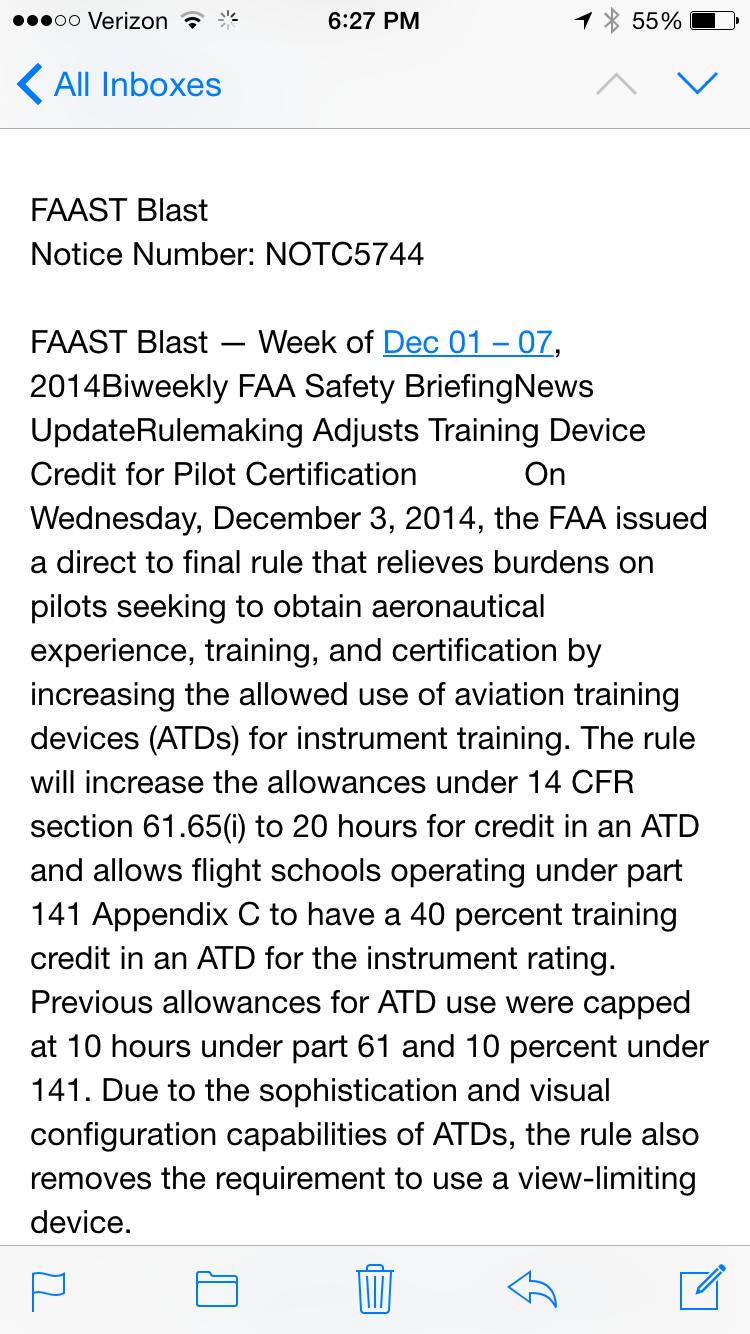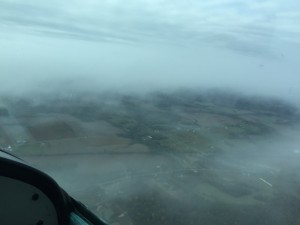Friday Focus on IFR
19 December 2014 1220Z
“Twas the night before Christmas,
and all through the skies,
some pilots took flight with “borrowed eyes.”
When all of a sudden and with a little dismay,
clouds and weather came into play.
Lesser pilots trembled and shook,
but intrepid pilots had read a good book.
They flew on with confidence, destination in sight
Singing ‘Merry Christmas to all, and to all a good night.’”
+++++++++++++++++++++++++++++++
Friday Focus
12 December 2014 2350Z
Yep, even dedicated IFR pilots enjoy flying VFR and seeing the world pass beneath them. I like these days!
++++++++++++++++++++++++++++++
New FAA instrument training rule
5 December 2014 1702Z
+++++++++++++++++++++++++++++++++++++++++++++++++++
Happy Thanksgiving
27 November 2014 1527Z
Happy Thanksgiving to all from Double i, LLC. Hope your day is restful, relaxing, and filled with all good memories.
++++++++++++++++++++++++++++++++++++
Friday Focus on IFR
31 October 2014
Unidentified low-flying objects observed by numerous, but perhaps questionable, sources. Still, if spotted, provide a PIREP to ATC. Could be hazardous to IFR flights.
+++++++++++++++++++++++++++++
Friday Focus on IFR
24 October 2014
Know Your Way Out
“Assuming you have done due diligence with your preflight briefing and you decide to launch in less-than-visual conditions or instrument meteorological conditions, it is prudent to know the direction of your best “out.” That is, be sure to know which general direction you can turn should conditions worsen. Ultimately, the way out may be a sideways diversion, a course reversal, a higher or lower altitude, or even an immediate landing. Those options should already be on your radar before takeoff and reevaluated regularly during the course of the flight.” (p. 85)
Source: Instrument Flying: 10 Indispensable Principles to Know and Remember. see www.doubleillc.com
++++++++++++++++++++++++++++++++
Friday Focus on IFR
17 October 2014
For VFR pilots: Should scattered clouds begin to slip in below your altitude, execute your Plan B option(s) sooner rather than later. Under the right conditions, scattered clouds can merge into broken or overcast layers, leaving you trapped above the cloud deck. For IFR pilots, assess the potential for a descent through the thickening levels of the soup. Keep on eye on temperature changes and the risk of ice. Plan ahead.
+++++++++++++++++++++++++++++++++++
Friday Focus on IFR
10 October 2014
Weather is Dynamic
“Whether you are a novice or seasoned pilot, no doubt you have seen weather conditions turn on a dime. The weather that exists at your departure city may not be the weather that exists upon your arrival in the next town—or even back at the airport from which you departed. Still, it’s frightening how many pilots either assume the weather at point A will be similar to the weather at point B, or believe (often mistakenly) they can handle the possibility of deteriorating weather.
FAA documentation indicates a non-instrumented pilot can fly for only a few minutes in IMC before losing control of the airplane. Tragically, about one-third of instrument-rated pilots who are not current as per federal aviation regulations (FAR 61.57) can also lose control of their airplanes and crash. Even well-trained and current pilots might find themselves scrambling when they encounter abrupt, unexpected weather changes, and are likely to face the inevitable question from air traffic control, “What are your intentions?” That’s why planning ahead, envisioning possible weather changes, and trusting your instruments are vital when Mother Nature throws you a curve ball during flight” (p. 84).
Source: Instrument Flying: 10 Indispensable Principles to Know and Remember. see www.doubleillc.com
+++++++++++++++++++++++++++
Friday Focus on IFR
3 October 2014 1247 Z
“Murphy’s Law is a time-honored maxim that states, If something can go wrong, it will. I would add: usually at the worst possible moment. An engine failure on takeoff into instrument meteorological conditions, a total electrical failure at night, sudden onset of unexpected weather, a bird strike on final approach—all are clear-cut examples of Murphy’s Law in action. It is at these specific moments when immediately and flawlessly executing a procedure may mean the difference between having a safe outcome or becoming an accident statistic.” (p. 64).
Source: Instrument Flying: 10 Indispensable Principles to Know and Remember.
VFR Works Too!
23 September 2014 1122 Zulu
Beautiful evening for a night flight at KOSU. Even IFR pilots like to look out the window!
+++++++++++++++++++++++++++++++




